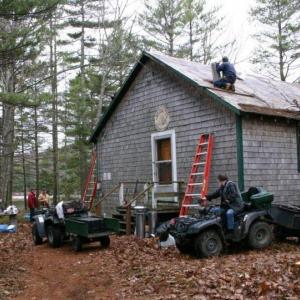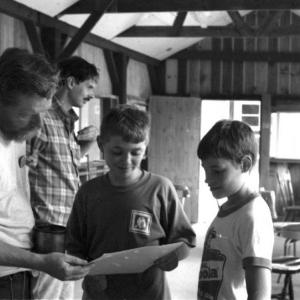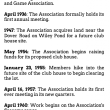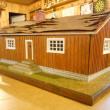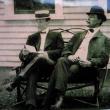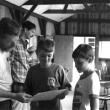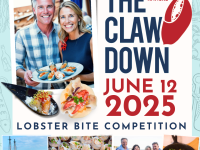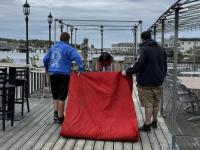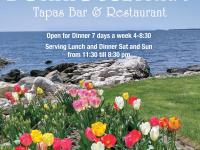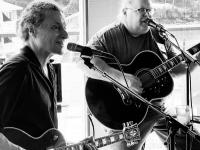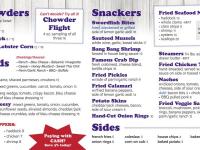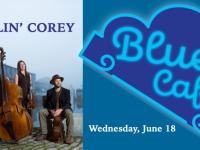Boothbay Region Fish and Game Association: The first 100 years
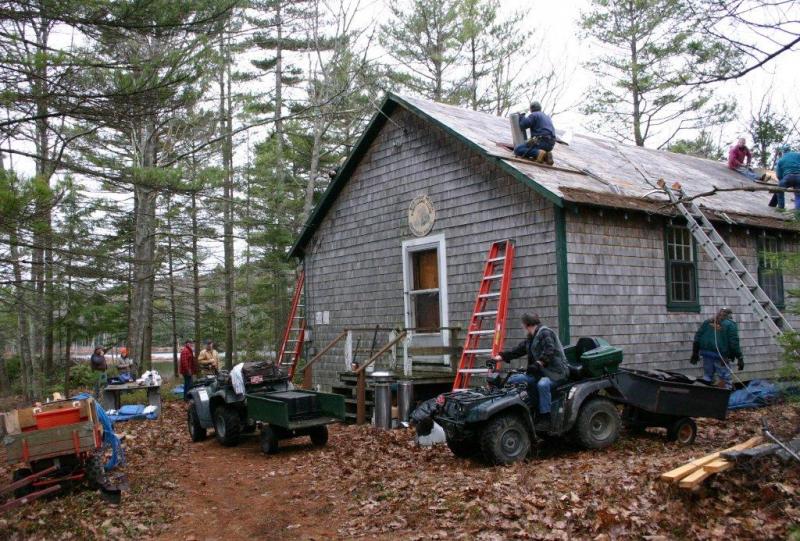 Spring 2005: Almost 50 years to the day from when construction first commenced, club volunteers gather to install a much needed new roof on their club house. Courtesy of Lucy Schmidt
Spring 2005: Almost 50 years to the day from when construction first commenced, club volunteers gather to install a much needed new roof on their club house. Courtesy of Lucy Schmidt
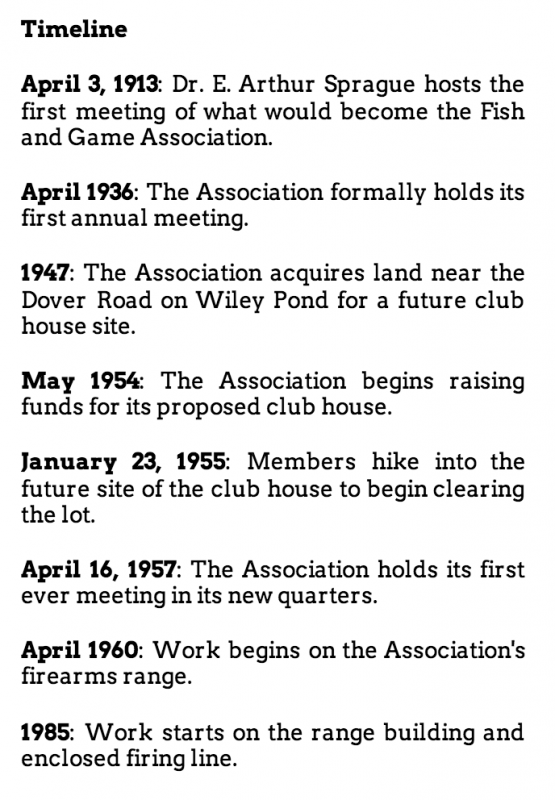
 This model of the proposed Club House was built by a Mr. Strattard in 1954 to be displayed in store windows around town as part of the associations’ fundraising campaign. Changes were made when the actual building commenced. Courtesy of Earl Leavitt
This model of the proposed Club House was built by a Mr. Strattard in 1954 to be displayed in store windows around town as part of the associations’ fundraising campaign. Changes were made when the actual building commenced. Courtesy of Earl Leavitt
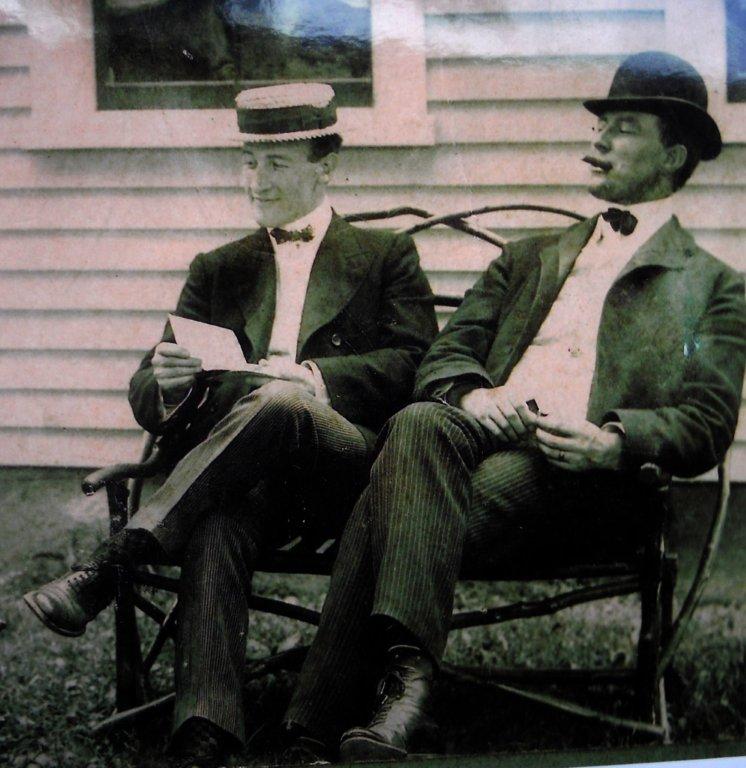 First Association president Dr. Edward A. Sprague (in straw hat), seated with long-time friend Dr. George Gregory. Sprague was a dentist whose office was across from the post office in Boothbay Harbor. Courtesy of the family of Dr. Sprague and Boothbay Region Historical Society
First Association president Dr. Edward A. Sprague (in straw hat), seated with long-time friend Dr. George Gregory. Sprague was a dentist whose office was across from the post office in Boothbay Harbor. Courtesy of the family of Dr. Sprague and Boothbay Region Historical Society
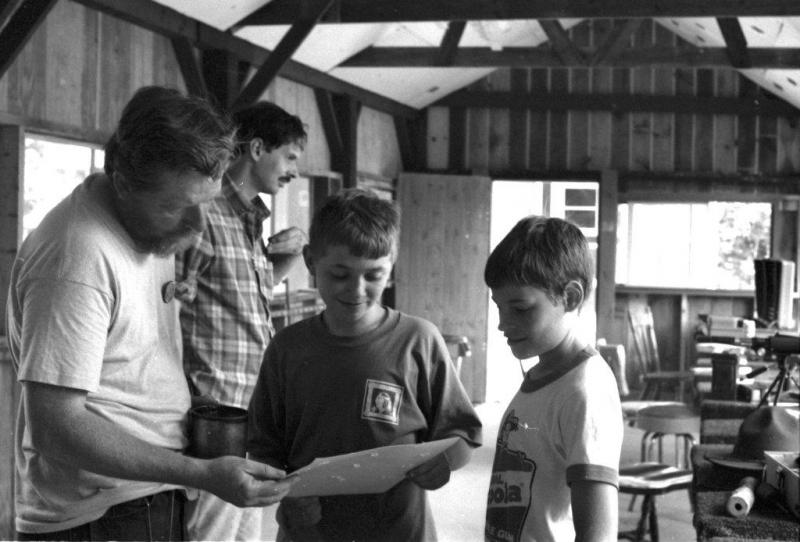 July, 1991: Scouts Eric Schmidt and Gearry Judkins seem happy with a freshly shot target during merit badge work. Instructors Earl Leavitt, foreground, and Carl Schmidt were among several certified members available for BSA and Hunter Safety programs. Courtesy of Lucy Schmidt
July, 1991: Scouts Eric Schmidt and Gearry Judkins seem happy with a freshly shot target during merit badge work. Instructors Earl Leavitt, foreground, and Carl Schmidt were among several certified members available for BSA and Hunter Safety programs. Courtesy of Lucy Schmidt
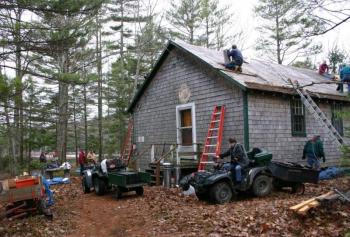 Spring 2005: Almost 50 years to the day from when construction first commenced, club volunteers gather to install a much needed new roof on their club house. Courtesy of Lucy Schmidt
Spring 2005: Almost 50 years to the day from when construction first commenced, club volunteers gather to install a much needed new roof on their club house. Courtesy of Lucy Schmidt
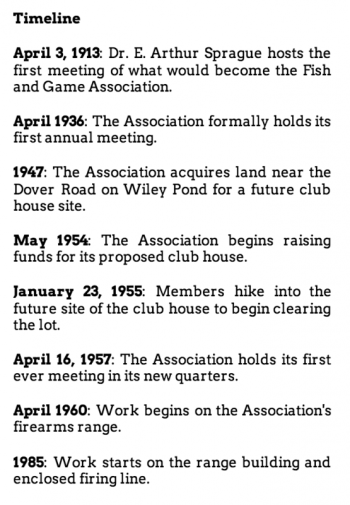
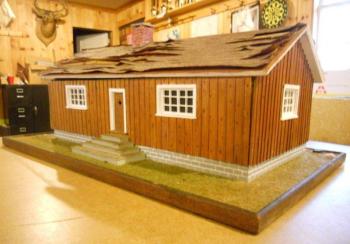 This model of the proposed Club House was built by a Mr. Strattard in 1954 to be displayed in store windows around town as part of the associations’ fundraising campaign. Changes were made when the actual building commenced. Courtesy of Earl Leavitt
This model of the proposed Club House was built by a Mr. Strattard in 1954 to be displayed in store windows around town as part of the associations’ fundraising campaign. Changes were made when the actual building commenced. Courtesy of Earl Leavitt
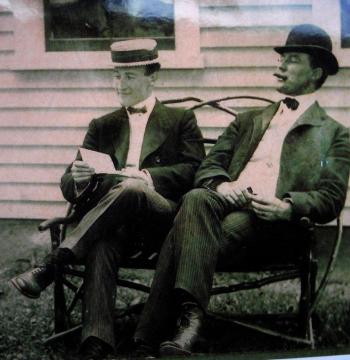 First Association president Dr. Edward A. Sprague (in straw hat), seated with long-time friend Dr. George Gregory. Sprague was a dentist whose office was across from the post office in Boothbay Harbor. Courtesy of the family of Dr. Sprague and Boothbay Region Historical Society
First Association president Dr. Edward A. Sprague (in straw hat), seated with long-time friend Dr. George Gregory. Sprague was a dentist whose office was across from the post office in Boothbay Harbor. Courtesy of the family of Dr. Sprague and Boothbay Region Historical Society
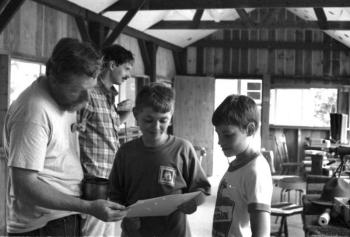 July, 1991: Scouts Eric Schmidt and Gearry Judkins seem happy with a freshly shot target during merit badge work. Instructors Earl Leavitt, foreground, and Carl Schmidt were among several certified members available for BSA and Hunter Safety programs. Courtesy of Lucy Schmidt
July, 1991: Scouts Eric Schmidt and Gearry Judkins seem happy with a freshly shot target during merit badge work. Instructors Earl Leavitt, foreground, and Carl Schmidt were among several certified members available for BSA and Hunter Safety programs. Courtesy of Lucy Schmidt
In the early 1900s, Maine was entering a time of new awareness in regards to its natural resources and how their use affected the growth and character of the state.
The first major strides were being taken to incorporate conservation in land and water use, and the requirements for sustainable wildlife habitat were no small part of the movement. Individuals and groups statewide saw the ever growing need for improvement in the fresh water fisheries and the need for laws that would protect and conserve for future generations all that was then at risk of disappearing.
In the spring of 1913, Dr. Edward A. Sprague, a local dentist and prominent citizen, was the leading sportsman active in organizing a Fish and Game association. Working with private funds and the state-run hatcheries, Sprague and his fellow sportsmen were able to implement a stocking program for the local ponds. They also worked for enlightened wild game hunting practices.
As reported in the April 3, 1913 issue of the Boothbay Register, a meeting was held in Sprague's offices where it was noted that even song birds were the victims of unlawful activity. Those assembled said, “This association is for the enforcement of the laws covering the fish and game and to promote in general the natural advantage of our woods and ponds.”
The original officers of the association were: Sprague, president; Capt. John W. Lunt, vice president; and H. Chandler Reed, secretary and treasurer. Other members who made up the original executive committee were Frederick Dodge, Robert Boyd, James B. Rogers and John Dearborn.
What Sprague and his contemporaries started would continue for many years: an association of interested parties, not necessarily a social organization but as a group always ready to act in the best interests of their cause.
Throughout the 1920s and early 1930s, these sportsmen would act when necessary, often without fanfare. But in 1936, the association decided it was time to become a more formal organization and among other actions, an annual meeting date was established.
A direct result of the association’s actions was reported in the Boothbay Register in May, 1936 (at which time 4,000 trout were stocked in Adams Pond).
World War II would bring a halt to the club’s plans and forever change the lives of its members and their families. But with the end of the war, as was the case with many organizations and endeavors, the Fish and Game Association experienced a rebirth and makeover. A new generation of region sportsmen set about the quiet business of establishing a visible club with a permanent home.
Meeting at first in members’ houses and fire station halls, by 1947 the association was in the process of obtaining land near the Dover Road adjacent to Wiley Pond. Still meeting formally only on an annual basis, the members nevertheless organized work parties and built the dam at the outlet of Wiley Pond, raising the water level to a height that would enhance it as a habitat for fish.
In those early days, the pond was stocked with small mouth bass. In May, 1954 the association went forward with its first public fundraising effort, selling “shingles” to raise money for the proposed club house. A model of the proposed building was commissioned to be put on display in store windows to boost sales.
On January 21, 1955, the Association’s Executive Committee called for the members to meet at the Club House lot on Sunday, January 23 to clear the site for the clubhouse and road preparatory to hauling lumber to the site.
The committee at this time consisted of Maynard Farnham, president; Clayton Dodge, secretary, with Earl Gaw, Earl Dunton, Ruben MacFarland, Erwin Dodge and Ken Bailey.
The members' efforts would bear fruit two years later when, on April 16,1957, the club held its annual meeting for the first time in a place it could call its own. Elected officers were Bert Sherman, president; Earl Dunton vice-president; Clayton Dodge, secretary and Erwin Dodge, treasurer. Present were 37 members and three guests. It was noted in the minutes that “A very good lobster stew and punch bowl was enjoyed by all.”
Throughout the late 1950s and into the 1960s, the club would enjoy a broadening of its activities. Always interacting with like-minded organizations, the association worked closely with the State Fish and Wildlife Dept., monitoring the region’s alewife runs and making stocking recommendations for the lakes and ponds. Poaching was taken seriously and area wardens worked with the club when incidents were discovered. Almost from the start, the club offered its facilities to the Boy Scouts and many a former Scout in the region has memories of camping and fishing on Wiley Pond. To this day, the Scouts are the only group permitted to camp overnight on Club grounds, a privilege not even granted to the association's own members.
Archery was extremely popular throughout the 1950s; and the Cheechako Archery Club was very active locally. Partnering with the Fish and Game Association almost from the start, they laid out archery courses and ranges on club grounds and in 1959, the State Archery Shoot was held at the club. During the Bicentennial celebrations the club’s rifle ranges were opened to participants in the Arnold Expedition for their muzzle-loading competitions.
As popular as hunting and fishing were with the membership, a growing interest in target shooting, as well as having a safe place to sight in hunting rifles, prompted the club to construct a formal range.
At the April,1960 meeting, Joe Dodge announced that “layout of the rifle range would commence as soon as the snow leaves the woods.” Over the years the range facilities would grow, keeping pace with the club's activities, which by now included the Fall Turkey Shoots that have become a club tradition.
Starting in the early 1980s, the well-known “Cook Shack” was added and work was begun on a formal covered firing line to replace the single table and chair that was a fixture for many years.
The association is now celebrating its 100th anniversary. Stewarded by a membership that has spanned three generations of like-minded individuals, the club stands on a foundation worth handing over to future generations. We can do no better than to pass on to those who follow the words that appear on our club emblem: “Keep Maine Green.”
Event Date
Address
United States

